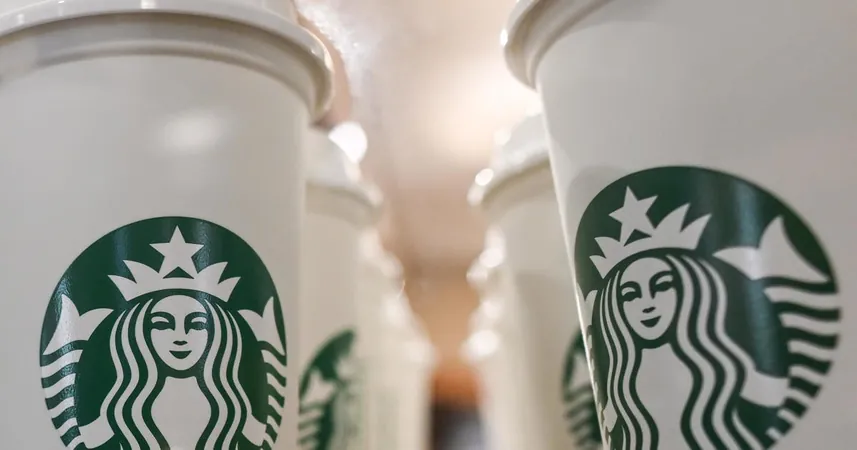
Starbucks Shifts Direction: New Purchase Requirement Aims to Create Safer Spaces
2025-01-15
Author: Jessica Wong
Introduction
In a significant policy change, Starbucks has announced that it will no longer allow people to linger in its cafes without making a purchase. This decision marks a reversal of its open-door policy, which had been in place for nearly seven years and was initiated after the highly publicized arrest of two Black men at a Philadelphia location in 2018.
New Code of Conduct
Effective immediately, Starbucks will enforce a new code of conduct across all company-owned North American stores. This set of rules not only mandates that customers make a purchase to stay in the café or use the restrooms but also prohibits discrimination, harassment, smoking, vaping, drug use, and panhandling within its premises.
Leadership and Vision
This shift comes under the leadership of Brian Niccol, who was previously at the helm of Chipotle. Niccol aims to revitalize Starbucks and reinforce its image as a welcoming community hub where people can comfortably enjoy their coffee.
Spokesperson's Statement
Starbucks spokesperson Jaci Anderson emphasized that the new policies are intended to prioritize paying customers, aligning with practices in many other retail environments. 'We want everyone to feel welcome and comfortable in our stores,' Anderson stated. 'By setting clear expectations for behavior, we can enhance the experience for our clientele.'
Free Refills Initiative
In addition to enforcing these new guidelines, Starbucks is introducing a generous offer for its patrons: starting January 27, customers who order their drinks 'for here' will be eligible for free refills of hot or iced coffee, served in proper reusable containers.
Enforcement Measures
However, visitors should be aware that the new policies come with strict enforcement measures. The code of conduct advises that individuals violating the rules may be asked to leave, with the potential for law enforcement involvement if necessary. Starbucks has committed to training its employees on how to effectively implement these changes.
Context of the Change
This reversal follows a history of challenges the chain faced post-2018, where concerns over safety and disruptive behavior caused significant issues in various locations. Last year alone, Starbucks had to close 16 stores across the U.S., including multiple locations in major cities like Los Angeles and Seattle, due to ongoing safety concerns related to illegal activities.
Conclusion
The changing landscape for coffee shops highlights an ongoing struggle to maintain a balance between community accessibility and the safety of customers and employees alike. Starbucks hopes these new measures will foster a more inviting atmosphere while tackling the complexities that have plagued its stores in recent years. As the coffee giant navigates these new waters, only time will tell if its efforts will restore its reputation as America’s beloved coffeehouse.


 Brasil (PT)
Brasil (PT)
 Canada (EN)
Canada (EN)
 Chile (ES)
Chile (ES)
 Česko (CS)
Česko (CS)
 대한민국 (KO)
대한민국 (KO)
 España (ES)
España (ES)
 France (FR)
France (FR)
 Hong Kong (EN)
Hong Kong (EN)
 Italia (IT)
Italia (IT)
 日本 (JA)
日本 (JA)
 Magyarország (HU)
Magyarország (HU)
 Norge (NO)
Norge (NO)
 Polska (PL)
Polska (PL)
 Schweiz (DE)
Schweiz (DE)
 Singapore (EN)
Singapore (EN)
 Sverige (SV)
Sverige (SV)
 Suomi (FI)
Suomi (FI)
 Türkiye (TR)
Türkiye (TR)
 الإمارات العربية المتحدة (AR)
الإمارات العربية المتحدة (AR)